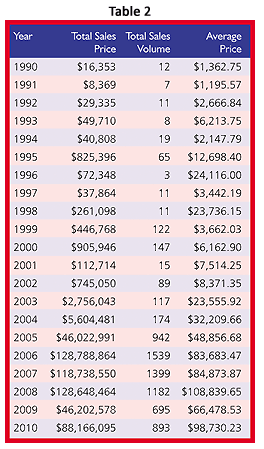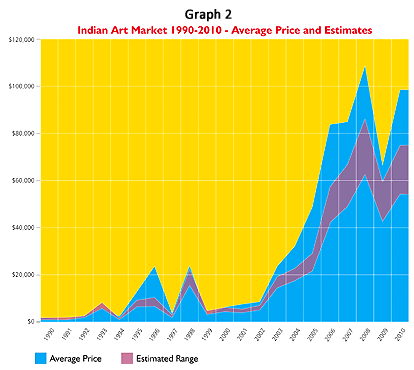- Prelude
- Editorial
- Manjit Bawa
- Husain's Calcutta
- Vivan's Visionary Reconstruction of History at Victoria Memorial, 1998
- The Remaking of Indian Painting
- Picasso Re-visited
- Benodebehari Mukherjee: A Recluse and the Centenary Show
- In Past and Present Continuum Speaking to Thota Vaikuntam
- The Importance of Being Husain
- Image-making to Image-circulation: Implicated Image(ry)
- 153 Years Old yet Young at Heart: Mumbai's Sir JJ School of Art
- Two Decades: A Critical Insight by an Art Critic and an Artist
- Biedermeier Style: Biedermeier Furniture
- Vacheron Constantin
- The Irony of Andy Warhol
- Then and Now: An Indian Perspective to the Art Market 1990-2010
- Pablo, Andy, Here I Come
- What Happened and What's Forthcoming
- Bid's Got Hammered?
- Anish Kapoor at National Gallery of Modern Art in Delhi and Mehboob Studio in Mumbai
- Tribute to Hemanta Misra: the “Calcutta Group” Painter
- Art Events Kolkata
- Mumbai Art Sighting
- Art Bengaluru
- Exploring the Riverine Culture of Bengal
- Alternative art practices define Bangalore
- India Art Summit Turns Three
- An Aesthetic Fair
- SSVAD: A New Arts Centre in Santineketan
- Visible Invisible by Siraj Saxena
- A Fleeting World : Paintings by Sunil De
- Previews
- In the News
ART news & views
Then and Now: An Indian Perspective to the Art Market 1990-2010
Volume: 3 Issue No: 12 Month: 1 Year: 2011
Market Monitor
by Art Bug
Last month, a well-known collector of Indian art had remarked that in order to step onto the next level of the art market, Indian art collectors need to be convinced about the potential of the contemporary artists and their works,  so that they can take the market discourse to the world.
so that they can take the market discourse to the world.
He was so true. Art cannot flourish without indigenous patronisation, as is evident by the sinewy curve that China has been able to generate lately. Especially so for the Indian artists, who despite having one of the most varied and ancient histories in the world could create just a ripple on the international market scene as late as 1995.
Until the early 1990s, when 20th-century Indian art was generally characterized as decorative art in international art circles, Indian art was categorized with other items from that category. This kept values low, commensurate with those of other decorative art objects. After 1995, following a movement among critics, art historians, academics, and players such as galleries and auction houses (the establishment of Saffronart and Osian's, which dealt exclusively in Indian art) the same art was classified as modernist and therefore 'fine art'.
It was during the mid-nineties that academic and critical discourse began to stress that 20th-century Indian art was an example of Indian modernism, a unique aesthetic tradition that expressed the modern Indian identity by blending traditional Indian visual themes and international artistic influences. This discourse hence suggested that this art had so far been aesthetically 'misjudged'; therefore implying that it had also been economically undervalued.
A look at lots offered at the international auctions will make the picture clear. In 1991, there were only 15 lots offered, of which 8 had to be bought-in. Before 1999, the number of lots crossed the 50 mark just once in 1995, when 66 lots were offered (Table 1), which is a remarkable change when compared to between the years 2006 and 2010, when the total lots were numbered as 1721, 1839, 1824,  1102 and 1161 respectively. The first auction of solely modern Indian art was held in 1995 by Sotheby's.
1102 and 1161 respectively. The first auction of solely modern Indian art was held in 1995 by Sotheby's.
It is remarkable to note that it was around the same time that India also introduced the 'open-market economy' thus enabling the rest of the world to take an active interest in her general market. Since art investments follow close on the heels of market investment, it is no wonder that the world started sitting up and taking notice of Indian art too.
The market for modern Indian art was created in three broad steps: Redefinition of the category: Art historians and academics began the process of redefining and reinterpreting 20th-century Indian art in modernist terms, emphasizing its originality and describing its aesthetic value. This in turn implied that the art had a higher economic value than what had been ascribed to it earlier.
Creation of valuation metrics: This part of the process took place among the commercial players. In order to generate trade in the art, auction houses translated the academic discourse into simple, straightforward constructs that not only explained the new category to stakeholders, but also enabled comparison and consequently valuation of the art works. Mukti Khare, assistant professor at Harvard Business School, working on the matrix of this newly created market segment found four main constructs being used in the auction texts: explications of the originality of the modern Indian aesthetic, emphases on artist careers and specific influences on them, the use of artistic movements and schools of art within the Indian context to define relative value, and finally, descriptions of the internationalism of Indian artists in order to establish their legitimacy in the art world.
but also enabled comparison and consequently valuation of the art works. Mukti Khare, assistant professor at Harvard Business School, working on the matrix of this newly created market segment found four main constructs being used in the auction texts: explications of the originality of the modern Indian aesthetic, emphases on artist careers and specific influences on them, the use of artistic movements and schools of art within the Indian context to define relative value, and finally, descriptions of the internationalism of Indian artists in order to establish their legitimacy in the art world.
Understanding: As the understanding spread, the value of modern Indian artworks increased significantly. The average price of a work at auction went from approximately $6,000 in the first six years of auctions to approximately $44,000 in the next six years of auctions starting from 1995. A couple of paintings broke the million dollar barrier, and several others sold for hundreds of thousands of dollars. These rapidly rising prices provoked greater coverage in the press, which in turn expanded the circle of stakeholders that converged on the understanding of modern Indian art.
Consequently, pre-auction estimates of the value of a given work made by auction houses became narrower, more precise over time, suggesting growing certainty about the valuation that could be expected. The difference between the auction house's estimate of an artwork's value and the final hammer price paid by the buyer decreased over time, indicating convergence over the value of works among buyers and sellers, which in turn indicated that the market for the category was established.
The best years for Indian art on the international market started in 2005 and are continuing.  In between, the years 2006 and 2008 were the best till date, with sales volume crossing the $120,000,000 mark. However, the average price index reached its highest in 2010 at $ 98, 70.23. (Table 2).
In between, the years 2006 and 2008 were the best till date, with sales volume crossing the $120,000,000 mark. However, the average price index reached its highest in 2010 at $ 98, 70.23. (Table 2).
That the confidence index is riding high on Indian art is evident as the difference between pre-sale estimates and final hammer price increases. While in 2003, the pre-sale estimate was around $20,000 with a final hammer price just about managing to cross the $20,000 mark, in 2008, it increased more than five times. Pre-sale estimates during this year crossed about $80,000 while the final hammer-price yielded an average price of $108,839.65. Actually, from 2006 onwards, it has been more or less the same story, except for the year of global recession -- 2009, when pre-sale estimates and average price hovered around the $60,000 mark. (Table 2 and Graph 1).
Experts believe the Indian art market has seen its worst days, and from here it can only look forward to a brighter future. The recent art market confidence survey by ArtTactic suggested “Indian Art Market Confidence Indicator has staged a strong recovery since May 2009. This has largely been on the back of the recovery in the secondary and auction market for Modern Indian art.” However, this was not without caution, as Art Tactic also noticed that “the last New York auction sales in September showed signs of fatigue, as the overall total for Sotheby's, Christie's and Saffronart came in 20% below the low pre-sale estimate.”
The main findings of the ArtTactic survey are as under:
1. The Modern Indian art market has increased by 5.2% as collectors gravitated towards the more established segment of the Indian art market.
2. Contemporary Indian art market struggles to regain momentum in the post-downturn environment. The Confidence Indicator for the Contemporary Indian art market has dropped 10.8% since the last reading in May 2010.
3. The confidence gap between Modern Indian and Contemporary Indian art has widened further. The Modern Indian Confidence Indicator on November 2010 was standing 78.2% higher than the equivalent confidence indicator for the Contemporary Indian market. Fear of rising speculation in the Modern Indian market drops by 7.9% as the market recovery slows down.
4. 53% of the respondents believe the Modern Indian art market has already rebounded, and 51% believe the Modern Indian market will go up in the next 6 months, with 49% of the respondents believing the market direction will remain flat.
5. 47% of the respondents believe the Contemporary Indian art market will recover in the next 1-2 years. In terms of market direction, 20% believe the Contemporary Indian market will go up in the next 6 months, versus 73% who believe it will remain flat.
*2010 data is current through October, 2010
*As per print media, internet, auction reports & artnet